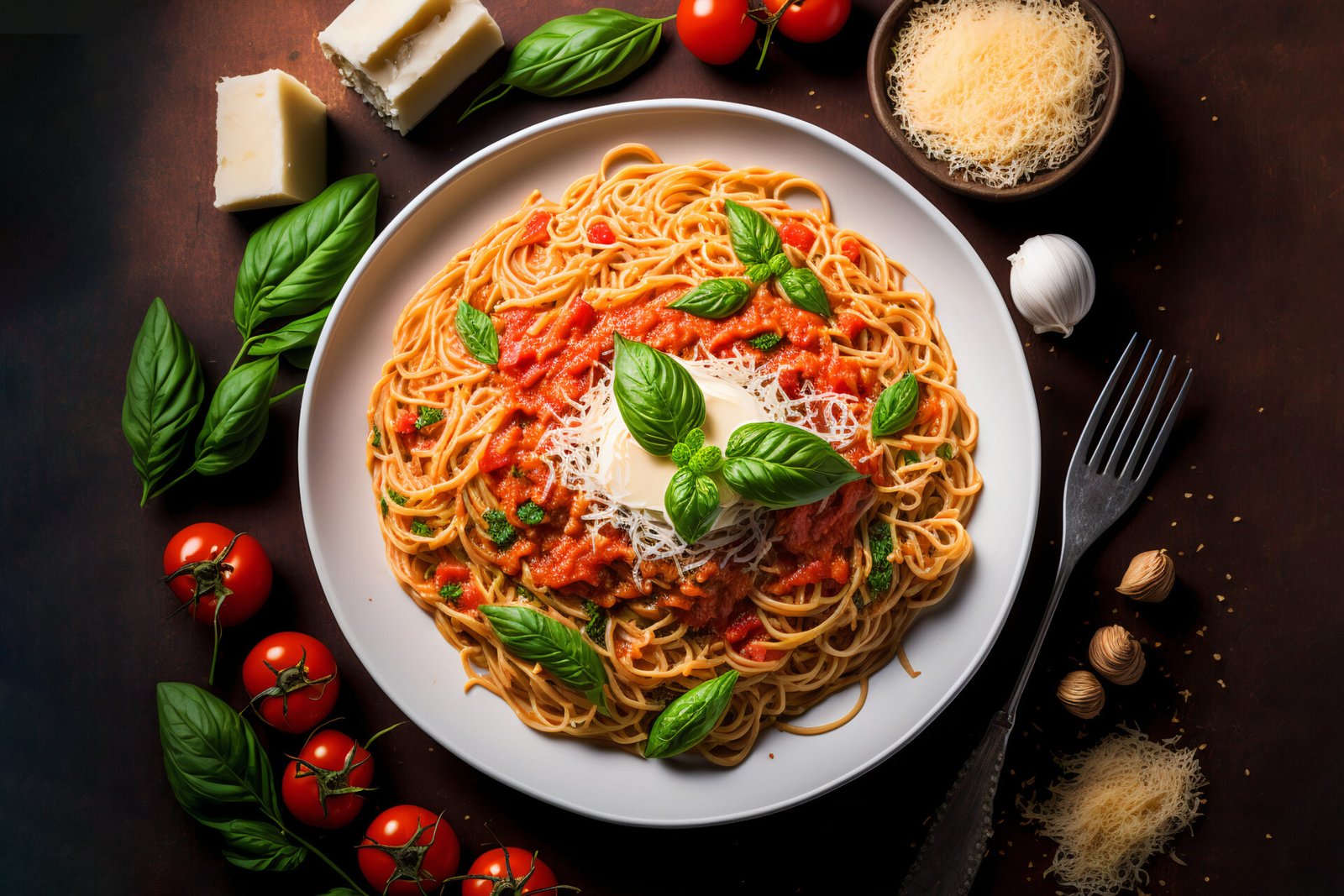Pasta

– Pasta (e.g., spaghetti, penne, fusilli, etc.)
– Water
– Salt
– Olive oil (optional)
– Sauce of your choice (e.g., marinara, Alfredo, pesto, etc.)
– Optional toppings: grated cheese, fresh herbs, crushed red pepper flakes, etc.
Equipment:
– Large pot
– Colander
– Saucepan
– Stirring spoon
– Tongs or pasta fork
– Serving bowl or plate
Instructions:
1. Boil the Water:
– Turn the burner on to high and pour water into a large pot. It is recommended for about 4-6 quarts of water to be used per pound of pasta that is being cooked.
– Pour the water into the pot and put this on the stove and put the heat on high until boiling intensifies.
2. Add Salt and Pasta:
– To do this, after the water has boiled, it is ready to be enlightened with salt as desired. This involves adding a range of 1 to 2 tablespoons of salt per each gallon of water that is used for the purpose.
– Ensure not to flood the pasta by carefully placing it into the boiling water. Stir the sauce occasionally to avoid the pasta from sticking to the sauce or sticking at the bottom of the sauce pan.
3. Cook the Pasta:
– In regards to the pasta, it is essential to prepare it according to the directions stated on the box. Also some kinds of pasta may need to be cooked longer than others do and it is very important to know this.
– It is good to stir the pasta at some intervals in a way that every angle of the pot will be in contact with the heat so that it can be cooked to uniformity to avoid sticking at the bottom of the pot.
4. Test for Doneness:
– Once the water has come to a boil, add a few tablespoons of salt, and begin to cook the pasta, as soon as you see that the pasta is ready for testing, do so regularly. Another important element is that the pasta has to be prepared ‘al dente,’ meaning that, while cooked through, it should have a slight resistance to the bite.
– Testing –Carefully take a portion of pasta using tong or fork and put it in your mouth to taste it. If it is still too hard, then again stir it and test its consistency at an interval of one minute.
5. Drain the Pasta:
– When the pasta is done to your preference, you should switch off that particular source of heat.
– Put on a colander the pasta with water and slowly pour to get rid of extra water.
6. Prepare the Sauce:
– If you have not yet prepared your sauce, you can do this while the pasta is boiling.
If you are still following your regular diet, then skip the meat sauce; otherwise, add meat to your sauce.
– The sauce should also be warmed in a saucepan on and to the same level of heat until it warms up.
7. Combine Pasta and Sauce:
– After pasta is done, turn off the heat, then pour this over the pasta or if you prefer, use another bigger pot or a bowl.
– Drizzle olive oil into the pasta (optional) and toss to coat. This prevents the pasta from sticking.
– Pour the hot sauce over the pasta and toss until the pasta is evenly coated.
8. Serve:
– Transfer the pasta with the sauce to a serving plate or bowl.
– Top with grated cheese, fresh vegetables, or other optional ingredients.
– Serve immediately and enjoy your delicious homemade pasta!

Remember, you can customize this basic recipe with your favorite pasta shapes, sauces and toppings for endless variations! Enjoy the experiment and bon appétit.Fresh pasta with hearty Bolognese and parmesan cheese generated by artificial intelligence.Pasta spaghetti with shrimps and tomato sauce served on plate on dark background. Closeup.
Calories in Pasta:
https://www.fatsecret.co.za/calories-nutrition/food/pasta
Also read: Chilli Garlic Sauce
